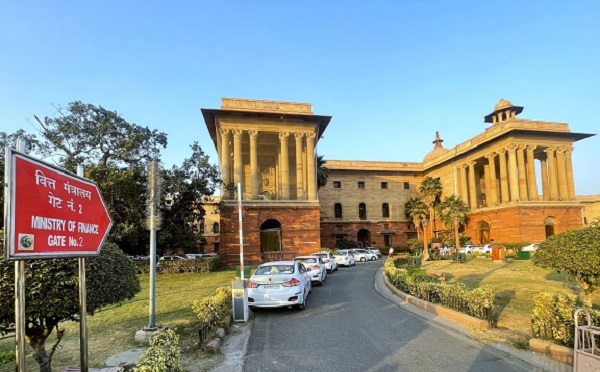.png)

Dhananjay Sinha, CEO and Co-Head of Institutional Equities at Systematix Group, has over 25 years of experience in macroeconomics, strategy, and equity research. A prolific writer, Dhananjay is known for his data-driven views on markets, sectors, and cycles.
March 3, 2025 at 7:26 AM IST
The headline GDP numbers for the third quarter of 2024-25 have offered an optical comfort — a steady 6.2% growth print, accompanied by upward revisions to both projected growth for 2024-25 and for the past years, 2022-23 and 2023-24. The retrospective strength embedded into these revisions, particularly in personal and government consumption, looks increasingly difficult to reconcile with the economic reality unfolding on the ground.
The credibility gap stems from the glaring disconnect between surging private final consumption expenditure in the GDP data and the underwhelming performance of key indicators that should, in principle, reflect the same demand story.
Consumer goods production, for instance, grew at a meagre 2.2% year-on-year in the third quarter of 2024-25, while imported goods and services contracted for the third straight quarter. If households were truly spending at the pace the GDP data suggests, both domestic production and imports should have shown at least some corresponding buoyancy.
Even more stark is the contrast between PFCE growth and the languid corporate performance across non-financial companies. Sales growth for these companies slowed to 4.9% in the third quarter of 2024-25, while averaging only 5% during the first three quarters of the year. This muted revenue trajectory, particularly for consumer-facing sectors, offers little evidence of a consumption boom.
The problem deepens when looking at the extraordinary upward revisions to 2022-23 and 2023-24 GDP. The 2022-23 GDP growth has been lifted by 60 basis points to 7.6%, while 2023-24 is now pegged at an improbable 9.2%, revised up by 100 basis points. Much of this revision has come from PFCE, which was bumped up to 5.6% from an earlier estimate of 4%.
This retrospective embellishment is difficult to square with the ground-level metrics for 2023-24. Consumer goods production grew only 3.9% year on year, non-financial corporate sales growth crawled at a mere 1.5%, and imports were weak. The economy does not appear to have lived through the consumption surge implied by these revisions.
A particularly jarring element is the sharp upward revision to government final consumption expenditure (GFCE) for 2023-24, which now shows 8.1% growth — up 570 basis points from the earlier estimate of 2.5%. This generous revision was made possible by sharply cutting 2022-23 GFCE growth to 4.3%, creating a favourable statistical base for 2023-24. Yet, data from the Controller General of Accounts shows government revenue expenditure actually contracted 3.8% in 2023-24. The data gap is hard to explain.
This growing incoherence is not a trivial accounting issue — it has real consequences for how businesses, investors, and policymakers interpret the economy. The GDP data suggests personal consumption is powering ahead, potentially encouraging companies to plan investments and capacity expansions. But on the ground, they see weak order books, slowing urban demand, and constrained rural incomes.
The credibility gap is particularly damaging for financial markets. If headline GDP numbers are increasingly seen as misaligned with the realities visible in corporate earnings, credit demand, and household financial stress, the relevance of GDP as a market input diminishes. Investors, both domestic and global, are already shifting attention to microeconomic indicators, corporate results, and alternative data to gauge the true state of the economy.
This disconnect between official data and household financial conditions is especially concerning. Indian households have already faced shrinking real wages, rising taxation, and eroding financial wealth — all of which contradict the premise of strong consumption-led growth. A staggering ₹92 trillion erosion in market capitalisation over the past six months, equivalent to around 45% of aggregate annual household income, represents a direct hit to household wealth, compounding the strain on future discretionary spending.
Even leveraged consumption — the main driver of premiumisation trends — is losing steam amid tightening credit conditions and worsening financial health for formal sector workers. Together, these factors point to households under financial stress, making the resilience in PFCE in the GDP numbers all the more implausible.
Notwithstanding the resilient GDP headlines, the pervasive concerns of demand slowdown has forced the fiscal shift underway.
The government has pivoted from capital expenditure towards revenue spending — including pre-election welfare doles and subsidies. But beyond the temporarily boosts, it does not create the durable income growth needed for sustained consumption. This shift is also an acknowledgement that the heavy capex expansion over past 7-8 years have failed to generate the positive multiplier effect by way of employment and income generation.
In effect, India’s growth narrative is becoming increasingly dependent on statistical reinterpretation rather than real economic traction. The GDP-PFCE disconnect is no longer a technical quirk — it is a warning sign that official data may be overestimating the resilience of household consumption and, by extension, the broader economy.
At a time when global investors are already questioning data credibility in major economies like China, India would be well served to avoid walking down the same path. A sustained disconnect between headline GDP and the realities reflected in corporate earnings, production data, and household financial conditions will ultimately erode confidence in the official economic narrative — with long-term consequences for both policy credibility and investor sentiment.




